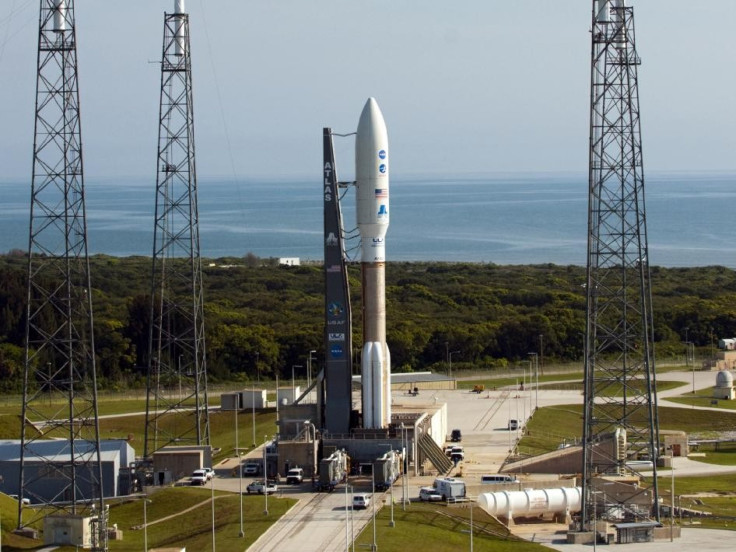NASA Readies To Launch Juno Spacecraft's Mission to Jupiter, The Most Advanced Probe Ever

With 70 percent chance of acceptable conditions, noon (EDT) Friday will mark the launch of a NASA spacecraft on its deep probe to Jupiter, on a five-year mission dubbed Juno, with the hope of unfolding the origin and life of the largest planet in the solar system.
This deepest probe ever in human history to Jupiter will set off from Florida aboard an Atlas V rocket, beginning a 400-million-mile trek. The spacecraft was built by Lockheed Martin Space Systems Company in Denver, while the mission is managed by NASA's Jet Propulsion Laboratory in Pasadena, Calif.
According to NASA, Juno's specific missions are:
Determine how much water is in Jupiter's atmosphere, which helps determine which planet formation theory is correct (or if new theories are needed)
Look deep into Jupiter's atmosphere to measure composition, temperature, cloud motions and other properties
Map Jupiter's magnetic and gravity fields, revealing the planet's deep structure
Explore and study Jupiter's magnetosphere near the planet's poles, especially the auroras - Jupiter's northern and southern lights - providing new insights about how the planet's enormous magnetic force field affects its atmosphere.
Thursday, NASA announced that the Atlas V, the launcher for Juno's mission to Jupiteris readied in place now after rolling out from its protective hangar at Space Launch Complex-41. The rocket is equipped with five solid-fueled boosters and a Centaur upper stage, one of the most powerful combinations in the NASA catalog for launching a spacecraft without astronauts onboard.
On August 5, the rocket will be airborne, carrying Juno up and over the Atlantic Ocean, before the rocket motors complete their burn and be "stagger jettisoned," separating themselves from the rocket. The jettison happens 106 seconds after the launch. After separating the nose cone and burning the Centaur upper stage in the next 10 minutes, the Juno spacecraft will set its destination at Mars, 1,740 million miles away.
Juno will carry several instruments, states Space.com, including the Jovian Infra-Red Auroral Mapper (JIRAM), which will probe the planet's atmosphere and the auroras generated by interaction between the atmosphere and intense radiation trapped by the giant planet's magnetic field.
Juno will also carry three Lego minifigs, especially prepared for this mission: aluminum variants in the shape of the Roman god Jupiter wielding thunderbolts, his sister Juno with a magnifying glass, and the astronomer Galileo with his telescope.
NASA provides the following methods to watch and follow the launch event:
Live countdown coverage on NASA's launch blog begins at 6 a.m. PDT (9 a.m. EDT) at http://www.nasa.gov/mission_pages/juno/launch/launch_blog.html . Coverage features real-time updates of countdown milestones, as well as streaming video clips highlighting launch preparations and liftoff.
To access these features, and for more information on Juno, go to NASA's Juno website at http://www.nasa.gov/juno, and to the mission site at http://missionjuno.swri.edu.
The launch will also be online, with a live chat available, on Ustream TV, at http://www.ustream.tv/nasajpl2. You can also follow the mission on Twitter at http://www.twitter.com/nasajuno.
© Copyright IBTimes 2024. All rights reserved.





















